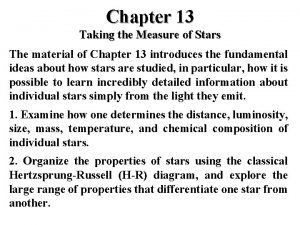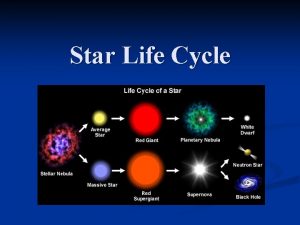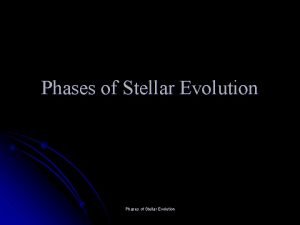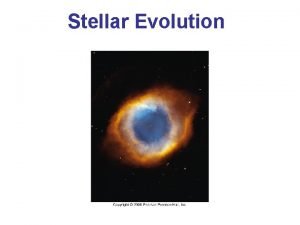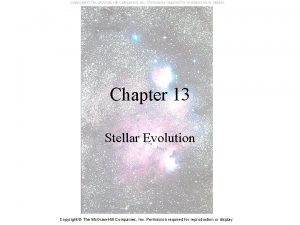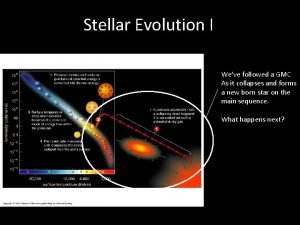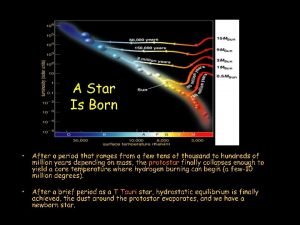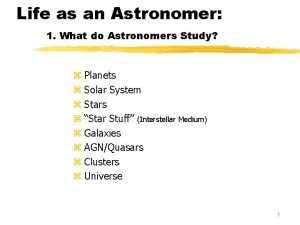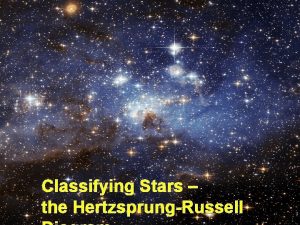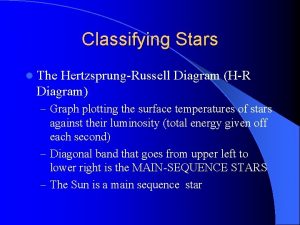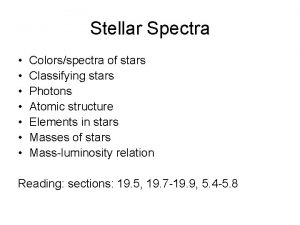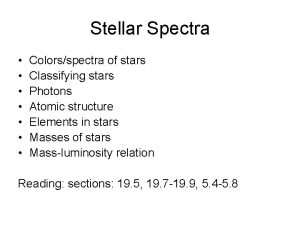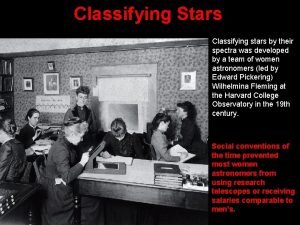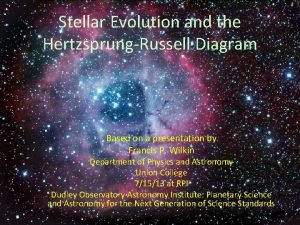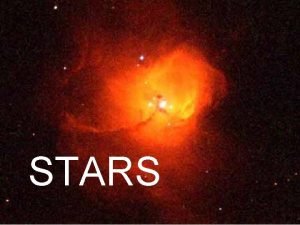Stellar Evolution Classifying Stars Astronomers use the HertzsprungRussell









- Slides: 9

Stellar Evolution

Classifying Stars • Astronomers use the Hertzsprung-Russell diagram to describe the life-cycles of stars. The highest temperature and luminosity for most stars fall within a band that runs diagonally through the middle of the H-R diagram. This is called the main sequence. Our sun is an example of a main sequence star.

H-R Diagram Discussion • • How is the diagram organized? What stars are hotter? What stars are brighter? Why do cooler red giants and red supergiants have a higher luminosity than the hotter yellow dwarfs?

Star Formation • Nebula – a large cloud of gas and dust in interstellar space; a region in space where stars are born • Protostar – Gravity makes the nebula region more compact and any spinning is amplified. The shrinking and spinning begins to flatten into a disk that has a central concentration of matter.

The life of a star • Heat and pressure build inside the protostar until nuclear fusion begins to take place. This is the birth of new star. • The main-sequence stage is the second and longest stage of a star. During this stage, energy continues to be generated in the core as hydrogen fuses into helium. Once fusion stops, the star moves into another phase.

Leaving the main sequence • A star enters the third stage when almost all of its hydrogen has been converted to helium. Without hydrogen for fuel, the core of the star contracts under the force of the core. The increases the temperature, and hydrogen fusion begins to take place in the “shell” of the star. This causes the star to swell. As the star expands, the gases start to cool and glow a reddish color.

Supergiants • Main-sequence stars that are more massive than the sun will become larger than giants in their third stage. Betelgeuse is an example of large, orange-red star that is a supergiant. These stars have a high luminosity but are relatively cool compared to the sun.

The final stage for sun-like stars • Once helium atoms have fused into carbon and oxygen, the star has no energy left and begins to die. • The star’s gases drift away, and what is left of the core heats the expanding gases, creating a planetary nebula. • Planetary nebula – a cloud of gas that forms around a sun-like star that is dying.

The final stage of sun-like star • White dwarf – a small, hot, dim star that is the leftover center of an old star. • As a planetary nebula disperses, gravity causes the remaining matter in the star to collapse inward. The matter collapses until it cannot be pressed together anymore. White dwarfs are very hot, but they are dim. Where are they found on the H-R diagram?
 Astronomers measure the masses of stars by
Astronomers measure the masses of stars by Stellar evolution diagram
Stellar evolution diagram Zero age main sequence
Zero age main sequence Stellar evolution lab the life cycle of a star answer key
Stellar evolution lab the life cycle of a star answer key Stellar evolution
Stellar evolution Stellar evolution
Stellar evolution Stellar evolution
Stellar evolution Stellar evolution diagram
Stellar evolution diagram The rwenzori mountains mary daniels is a student in england
The rwenzori mountains mary daniels is a student in england What do astronomers study
What do astronomers study
